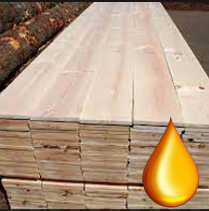Lumber Wood Price: A Comprehensive Guide

A Comprehensive Guide to Lumber Tycoon 2 Wood Prices
April 8, 2023
Understanding the Current Lumber Wood Prices
April 8, 2023Factors That Affect Lumber Wood Price
Lumber wood price can be influenced by several factors, including Contact us
- Supply and Demand: When the demand for lumber wood exceeds the supply, prices tend to rise. Conversely, when the supply is more than the demand, prices tend to drop.
- Production Costs: The cost of producing lumber wood, including harvesting, transportation, and processing, can impact its price.
- Weather Conditions: Severe weather conditions such as wildfires, hurricanes, and floods can disrupt the supply chain of lumber wood, leading to price fluctuations.
- Market Speculation: Speculation by traders and investors can also influence lumber wood prices.

Understanding the Different Types of Lumber Wood
There are various types of lumber wood, each with its unique characteristics and uses. Some of the commonly used types include:
- Softwood: Softwood lumber comes from coniferous trees and is primarily used in construction, furniture, and paper manufacturing.
- Hardwood: Hardwood lumber comes from deciduous trees and is commonly used in furniture, flooring, and cabinetry.
- Plywood: Plywood is a type of engineered wood made by gluing several thin layers of wood together. It is commonly used in construction, furniture, and cabinetry.
Tips for Buying Lumber Wood at a Reasonable Price
Here are some tips to help you buy lumber wood at a reasonable price:
- Buy in bulk: Buying lumber wood in large quantities can help you get a better price.
- Choose a reliable supplier: Find a supplier that offers high-quality lumber wood at a reasonable price.
- Look for deals: Keep an eye out for deals and discounts offered by suppliers and retailers.
The Current State of Lumber Wood Price
In recent years, the lumber wood market has experienced significant price volatility. In 2020, lumber wood prices skyrocketed to record highs due to a surge in demand from the construction industry and supply chain disruptions caused by the COVID-19 pandemic. However, the prices have since stabilized, but they still remain higher than pre-pandemic levels.
Factors Driving the Increase in Lumber Wood Price
Some of the factors driving the increase in lumber wood price include:
- Increased Demand: The demand for lumber wood has increased due to a surge in construction activities, especially in the residential sector.
- Supply Chain Disruptions: The COVID-19 pandemic has caused disruptions in the supply chain, leading to a shortage of lumber wood.
- Tariffs and Trade Restrictions: Tariffs imposed on Canadian lumber imports and trade restrictions have reduced the supply of lumber wood in the US market, leading to higher prices.
How to Navigate the High Lumber Wood Prices
Navigating high lumber wood prices can be challenging, but here are some tips that can help:
- Look for Alternative Materials: Consider using alternative materials such as steel, concrete, or plastic lumber in construction projects.
- Buy Locally: Buying lumber wood from local suppliers can help you save on transportation costs and support the local economy.
- Plan Ahead: Planning ahead and ordering lumber wood in advance can help you avoid price spikes and ensure availability.
